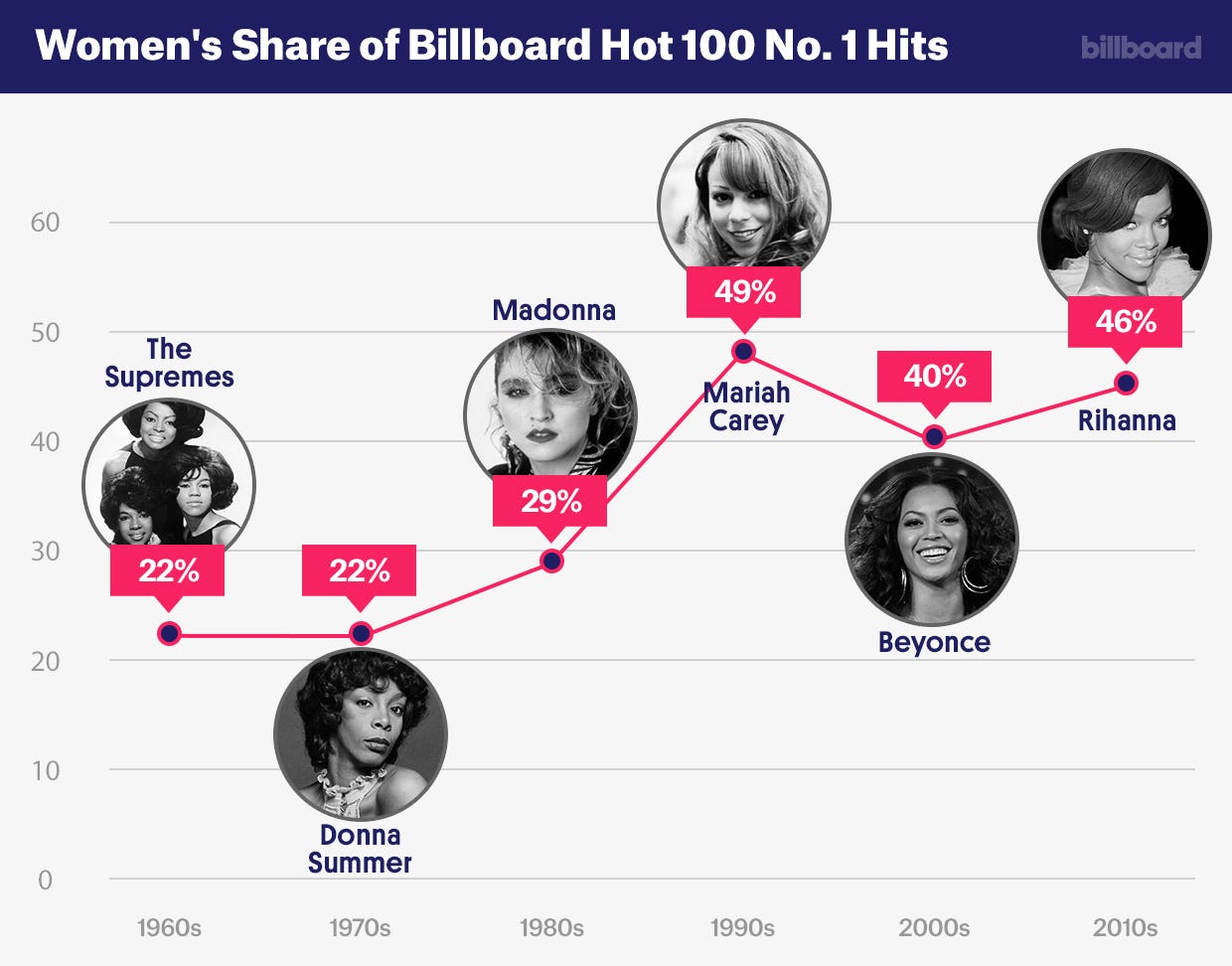Billboard’s March edition proclaims “Women are Dominating The Billboard Hot 100.” Women have indeed claimed more no.1 spots on Billboard’s 2019 charts already than they did for all of 2018.
Two years ago, Trevor Anderson also tracked how female-acts have increasingly claimed the No. 1 slot of Billboard’s Hot 100 over decades:

When it comes to streaming, Spotify and Apple Music have built their own top charts to rival the longstanding Billboard Hot 100 chart. Because Apple and Spotify both cater to different markets, it is worth investigating how fans’ tastes differ across those platforms.
Casually flipping through the past few years’ chart rankings, you’ll immediately notice that the majority slots go to male acts. That seems counter to the recent buzz. So what’s up?
- How big is the gender divide for top performers?
- How different are streaming charts from the more universal Billboard chart?
- Have audience’s listening preferences changed over time?
We can find our answers by looking to the stars! Well, if by “stars” you mean top performers on the charts.
First, a few considerations:
- Because lots of individuals can be credited on a song (multiple artists, or multiple members in a band) we’ll count just the primary song credit and for bands we’ll look at just the lead singer.
- Spotify chart means Top 200 chart. Spotify tracks the top 200 tracks but for consistency we’ll just look at the top 100. For this analysis, we took the data since July 2017.
- Apple Music chart refers to Apple Music Daily Top 100 chart. The Daily Top 100 chart was released in August of 2018. We started tracking it in September.
A Gender Divide of the Charts:
How many women make it onto the charts at all? To answer this quesiton, we compiled a list of over 104,000 data points over the last two years across Billboard, Spotify, and Apple Music.






